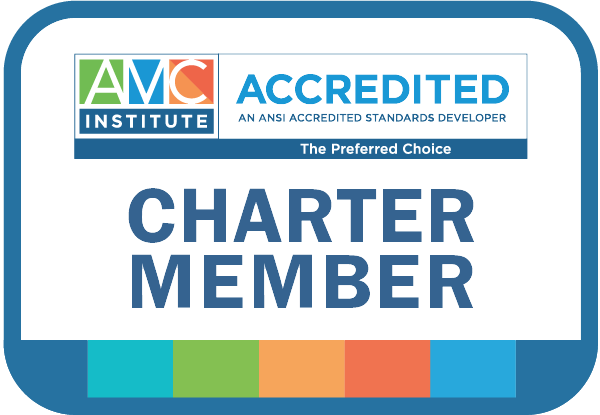The Future of Associations
On Friday, January 17 I had the privilege of moderating an esteemed panel of experts in a discussion titled, The Future of Associations at the National Association of Manufacturers Council of Manufacturing Associations Winter Meeting.
The audience included more than 100 association executive members of the NAM CMA and more than 200 people joining live via webcast.
If you missed the session, you missed a lot. However, don’t be upset because you can view the entire session by visiting this link.
I thought the points of view offered by the three panelists were very interesting and in some ways surprising. All in all, the panelists agreed on one major point: In five to ten years associations will not look like they do today.
Each panelist had very different points of view as to why associations will change and what exactly associations will look like in ten years.
I would like for this blog post to become an opportunity for all of you (association executives, association staff, association volunteers) to share a dialog about the future of associations. Think about the following questions and reply with your answers to some or all of them. Let’s see if we can shape the future of associations instead of letting the future shape them for us.
1. What kind of thinking should associations and association leaders be doing to deliver value to members in the future?
2. How are demographic shifts impacting associations now and in the future?
3. With major demographic shifts occurring, how will associations deliver value to their significantly different members in the future?
4. How are volunteers and volunteering changing in the future?
5. What are the key drivers of change in associations?
6. Will the consensus process of decision making change in the future? If so, how will that change affect associations?
7. Who/What will be the three greatest competitors of associations in the future?
Let’s get this discussion going. I’m excited to see the results.



Thanks, Rick. It was a pleasure to work with you. here are some thoughts on your first question: “What kind of thinking should associations and association leaders be doing to deliver value to members in the future?”
If you want to systematically deliver innovations that deliver real value to your members, you cannot ignore your foundation. Innovation relies deeply on human infrastructure for success: leadership, talent, and idea management.
1.) Leadership sets the pace, overseeing all aspects of the enterprise and continually reinforces the need for operations and innovation to coexist, managing the tension creatively.
2.) Talent brings experience and expertise to bear on market responsiveness and the midwifing of new offerings.
3.) And a robust process for the emergence, development, and maturing of ideas ensures people are continuously thinking together about how to stay ahead.
Association leaders who want to deliver value to members in the future must learn to take innovation seriously and invest in it appropriately in these three areas.
Thanks for the comments Seth. I have a follow up question – How does an association start to “innovate”? You’ve mentioned above that the association’s “foundation” is necessary as part of the process – leadership, talent, idea management. But if an association is wanting to position itself to continually deliver value to its members (and profession or industry), how does it start the innovation process?
Innovation can start pretty much anywhere, but does it have a home in the organization once it starts? If it doesn’t, it will dwindle quickly or at best become a half-baked idea with partial support that limps along. It’s not really so important where it starts, because new ideas appear all the time like grass in the sidewalk cracks. What makes the difference between success innovators and others is that successful innovators have ways to identify the new ideas, cultivate and develop them, decide at certain points whether or not they are worth pursuing, and for that are dedicating resources to help them grow.
So, Rick, I think innovation happens all the time. The question is what is the organization’s response? if you want innovation to flourish you need leaders and an organization that take innovation seriously and create an environment that not only welcomes it but is ready to develop it.
Rick — You did a good job moderating the session. I enjoyed Seth’s remarks; nice to hear from someone “outside the tribe” every now and then. It’s always useful to hear John’s responses to questions. John provides a good reading of where the profession of association management is on things.
I’m going to share some observations about the 1 hr. and 7 min. recording and then offer some suggestions for a follow up.
Unfortunately, the other panelist continues to be given a stage and mic time. If anyone reading this comment has not yet viewed the video recording of the session, trust me, if you’ve ever heard Jeff speak you can simply fast-forward past his responses. They are predictably messianic. He speaks in broad generalities, not recognizing that many organizations are quite successful and responsive to change. His formula is straight out of a religious fanatic’s playbook: 1) everyone is a sinner; 2) I, and only I, know the evil in this world; and 3) follow my teachings to reach salvation.
I take it back — he did add something new to his liturgy: “the rapture is 2014”. Apparently, 2014 is some sort of “gateway year” and if organizations don’t wake up and follow his teachings… well something really bad is going to happen to them! I’m thinking we’ll end up at Area 51, or something.
In addition, Jeff is a “walking, talking hypocrite”. He paints all associations with the same ills and problems and then when John stated (rather aptly) “when you’ve met one association, you’ve met one association” to emphasis that all organizations are unique in some way, Jeff nods his head in agreement. Maybe that’s not hypocrisy; maybe we’re just all “unique sinners”. Yuck!
For me the remarks were disappointing to what is an otherwise important general topic for associations — challenges we face (in broad terms…).
First, the vast majority of the responses had to do with “what we do”. Topics like: revenue sources, content generation, attracting the younger generation — apparently the “younger generation” is so different that we should probably think of them as a different “species” than merely a different generation — and let’s not forget the latest buzz word “innovation”. Apparently it doesn’t matter that there’s no consensus on what innovation really is, but let’s not let that stop us — let’s still be innovative. Oops, almost forgot that we need to be entrepreneurial too!
Near the end a gentleman from the audience tried to redirect the panelists with excellent question about “opportunities” facing associations, vs. the “problems theme” that dominated most of the session to that point. It’s too bad this redirect came so late in the session – that could have been more fruitful, I think.
The big “omission” for me in the panelists’ remarks is that no one talked about how the core purpose of associations may or may not be challenged by all the environmental changes. Not one of them spoke about the unique role of associations in our society and economy is “to create impact and change OUTSIDE the association.” No one made the point that associations are merely vehicles for making change.
Let me try a simple analogy here… associations are little more than a vehicle we use to complete a journey; where the destination is the entire reason we even purchased the vehicle — yet most discussions on the topic of “what will the association of the future look like” guarantee that we continue to focus on the instrument and not the purpose as the only relevant context to the entire discussion (NOT “conversation” – discussion! Also, can we loose the jargon? It gives a false sense of relevance.)
As a result of this mis-focus, we get ideologues blathering their self-serving narratives about what’s wrong with associations for one purpose — to sell more consulting time!
My third and final observation is that none of the panelist used actual data and evidence to support their positions. AND, when they could, they were miles from the facts. John, who has no excuse, stated that dues revenue as a % of revenue has been dropping – the implication was “dramatically” over the years and can be expected to continue.
The facts are that Dues Revenue dropped exactly 2.6 percentage points as an average between 1993 and 2011 (ASAE’s Operating Ratios). Two things are notable about this change. First, the rate of change was glacial – if the rate of change was constant over the period, it took 7 years for each 1 percentage point change. Second, just because the ratio is smaller doesn’t mean that there wasn’t an absolute increase over the period. It simply means that some other revenue line increased to a greater extent. (I have a short write-up on the changes over this 19-year period if anyone emails me: lobue@lm-mgmt.com).
The point is — dues revenue is NOT under siege across the association market — not according to ASAE’s own studies.
Suggestions for Extending This Discussion (not conversation!)
1. Get veteran association execs and managers on your panel with nothing to sell.
2. Insist that your panelists have “relevant” independent data and evidence to support their assertions about general trends in the market — we NEED to get away from “convenient narratives” based on anecdotal experiences.
3. Have respect for history — at least have read de Tocqueville’s chapter on associations in America (circa 1835) and be able to describe what’s changed and what hasn’t.
Don’t get me wrong — personal experiences are fine — they just are not the basis for pronouncing generalities.
There was one general problem raised in the session that I agree with completely — I think John brought it up. That is the next generation of association leaders comes from a smaller population cohort than the current retiring generation. We owe it to this next generation of leaders to be more fact-based than our generation has been.
We also need to help them respect history. NONE of the panelists in this discussion referenced how the environmental changes we’re facing today are similar or different to past disruptions. It’s sad, but there’s no business in it for them to put these changes in an historical context — they need customers to believe that they are the only ones with the knowledge and skill to fix their problems because their problems are so unique.
Sorry this response is as long-winded as a “De Cagna Answer” — thanks for making the opportunity. I hope it continues per above 3 recommendations.
Regards,
Michael
Michael, thanks for your comments. You have given readers much to think about and comment on.
I hope the readers can see past some of your personal commentary to see the value you have added to the conversation.
Your points about utilizing data to draw conclusions is well-taken. We all make decisions every day based on data – we absolutely must utilize data to make future decisions as well as use it to predict our future positions as associations. Of course we also should utilize empirical evidence based on our own experiences.
I think its also a great point that if we are considering the future of associations, we must consider the purpose of associations and whether that purpose will continue to be relevant in the future. As the moderator of the panel, I’ll take the blame for missing that discussion area.
One thing is for sure – there are no right or wrong answers to the question of the future of associations. We owe it to our profession and our associations to continue the dialog and do our best to create that future.